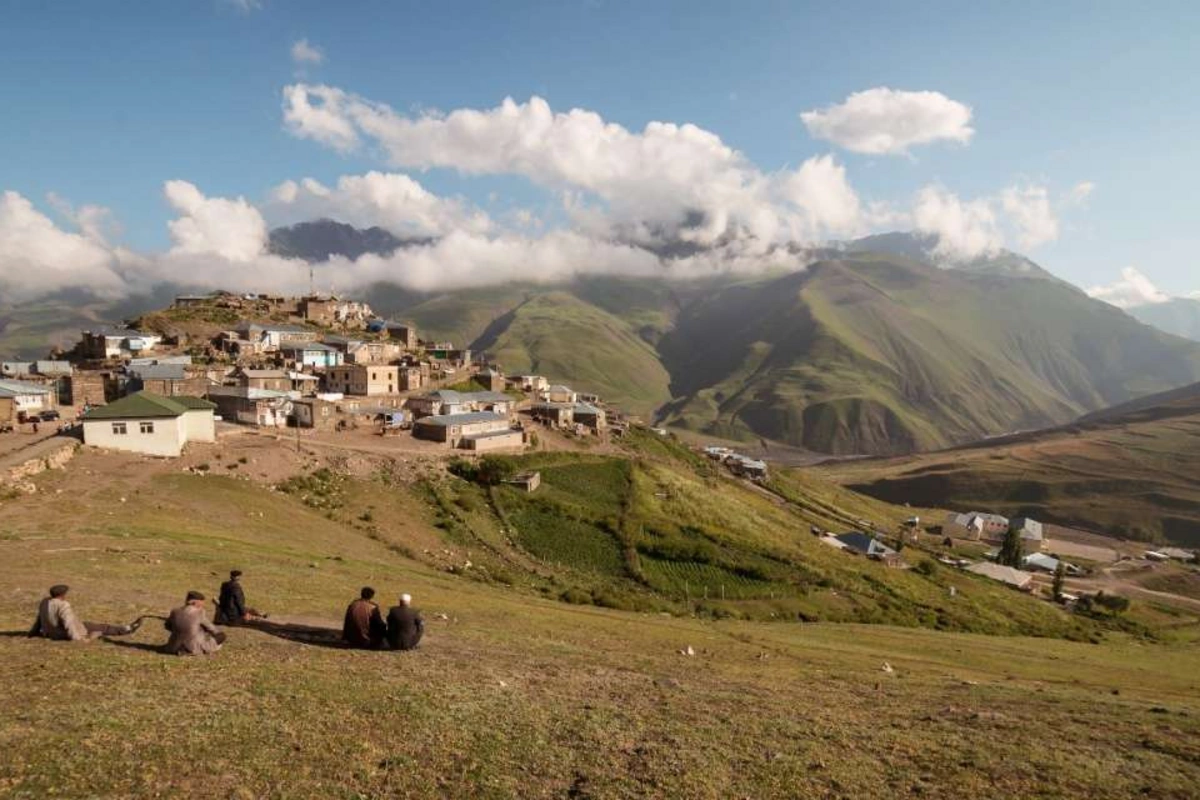
Xinaliq, one of Caucasus's highest settlements, is a magical place with its own language and timeless traditions.
Image: The Road Provides/Shutterstock
Glorious highlands rise up towards Mt Shahdag in the Azerbaijani High Caucasus. Here lie a handful of timeless villages that were so isolated for so many years that they retain their own distinctive languages. Some, like Buduq, Haput, and Qriz, remain difficult to access by vehicle without a tough jeep and towing capabilities. However, the best-known classic is Xinaliq (aka Khinalug, Khinalik, etc.), one of Caucasus’s highest permanent settlements at an altitude of 2350m.
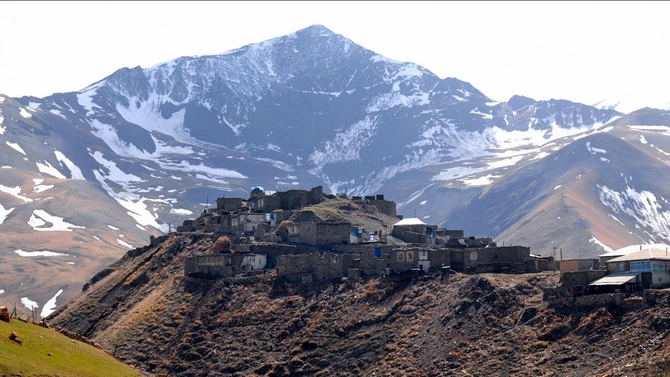
Image: Kirill Skorobogatk/Shutterstock
The grey rock-stone houses that form Xinaliq’s central core are stacked higgledy-piggledy up a steep knoll. Traditionally, the flat roof of one house formed the front yard of the one behind – though pitched metal roofs have become more common since the village was linked to the city of Quba by an asphalted lane over a decade ago. That has also allowed it to become an increasingly popular tourist destination. Fortunately, the influx of day trippers doesn’t appear to have destroyed the magical atmosphere of the place, a flavour that’s best savoured by staying overnight with a local family in one of the simple homestays.
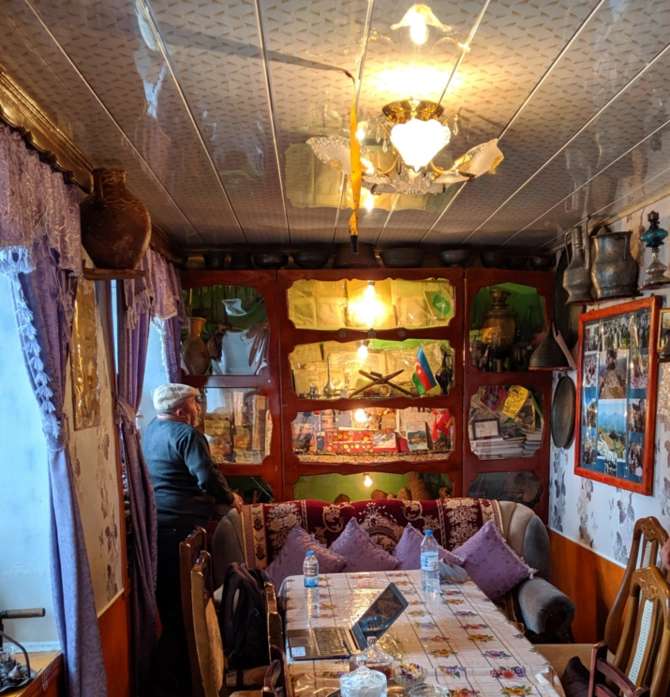
Image: Mark Elliott
One of these is hosted by Hajibala Badalov, whose typical house contains a collection almost as impressive as Xinaliq’s two official museums. He is also the co-author of a phrase book of the Xinaliq language (Kətşi Miż) which can be downloaded here. The language has similarities to Lezgi and Georgian, uses a 49-letter alphabet which includes several ‘super-plosives’ and six variants on k and q.

Image: The Road Provides/Shutterstock
Heavy-duty tractor-trucks and horses are still widely used, and some older local men still wear traditional astrakhan hats.
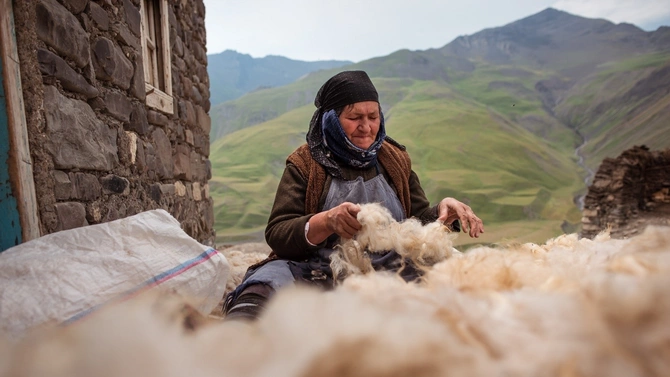
Image: The Road Provides/Shutterstock
Women still fetch water at communal taps, beat carpets over washing lines, and sort raw sheep wool in great heaps after washing it in long metal troughs.
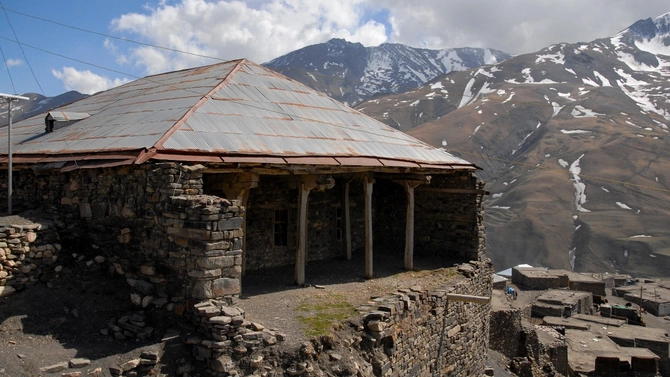
Image: Kirill Skorobogatk/Shutterstock
At the apex of the village, the modest Abu Muslim Mosque has 12th-century origins, and a 2015 restoration has rebuilt its frontage with traditional rams-horn style T-joist wooden pillars. Dotted about the surrounding area are little collections of ‘holy’ stones, some cannonball-shaped, possibly meteorites. The 1388 mosque called Pirəcomərd occupies the site of a former watch tower, while Xıdır Nəbi is a mysterious stone box of a structure that’s almost windowless and thought to have half-forgotten Zoroastrian origins.
It’s hardly surprising that fire worshippers would have been drawn to this area as an hour’s hike north of the village, you come across the most unexpected eternal flame – a natural gas vent that used to be a popular place for shepherds to brew tea. Around 2016, a small stone ateshgah (ceremonial style fire-hearth) was built over the site. However, disputes over access routes through the Shahdag National Park often means that visitors are refused permission to visit.
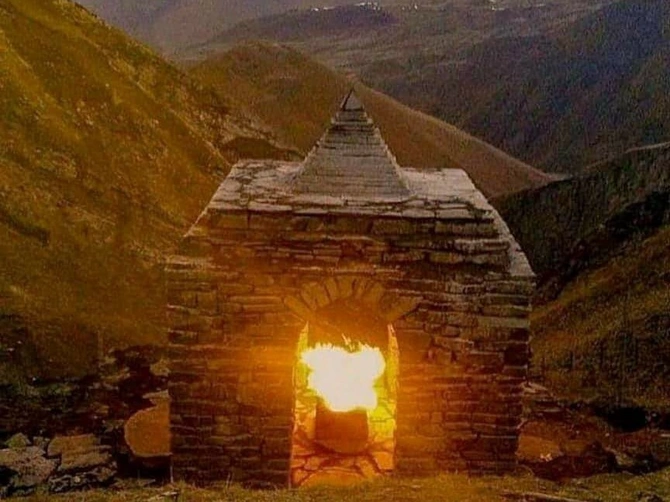
Image: cyrus49
If you’re staying overnight in summer, don’t miss the twilight delight of watching the sheep trotting back to the safety of the family compounds in the village – they know their way so well that the flocks rarely seem to need guidance. In winter, it used to be impossible for cars to reach Xinaliq for several months due to deep snow, but the climate has changed noticeably, and it’s now rare for the village to be cut off for more than a day – though it can still be bitingly cold at night. Despite the availability of electricity these days, many homes still use bricks of homemade fuel fashioned from animal dung mixed with dried grass.
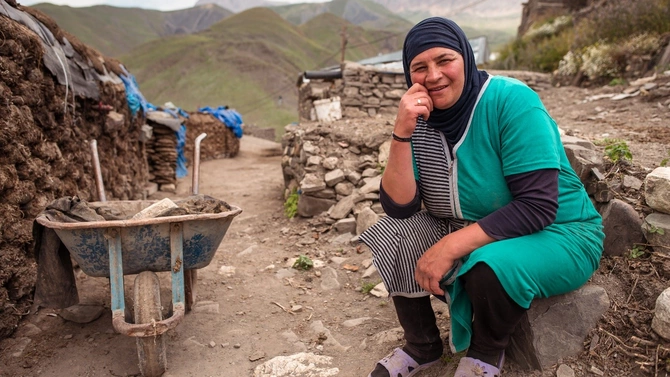
Image: The Road Provides/Shutterstock
According to local myth, Xınalıq was founded by direct descendants of Noah’s son Japeth, who are believed to have arrived here from Tufandağ, a pyramid-shaped mountain to the west, still considered sacred. Locals call the village Ketsh and refer to themselves as Ketdid, the name Xinaliq coming from a name for the red dye henna that was grown here on now long-abandoned terraces. Or, according to other versions, because 8th-century Arab visitors admired the ‘henna-like’ hues that illuminated the village at sunset. When clouds clear, you might see the effect for yourself.

Image: rjb.cloud/Shutterstock
Share on social media